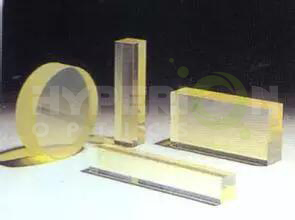In today's fast-paced world, capturing moments has become an essential part of our lives. From smartphones to professional DSLR cameras, we have witnessed tremendous advancements in photography technology. One such innovative creation in the field of optics is the spherical lens camera. In this blog, we will explore the technical workings and the intricate structure behind the revolutionary spherical lens cameras manufactured by Hyperion Optics.
Spherical lens cameras are designed to replicate the structure and functionality of the human eye. These cameras utilize specially crafted spherical lenses, which enable them to capture and reproduce high-resolution images with stunning clarity. Unlike traditional cameras with flat lenses, the spherical lens cameras employ a curved lens surface that helps eliminate aberrations and distortion, resulting in superior image quality.
Spherical Lenses
The heart of spherical lens cameras is the meticulously engineered spherical lenses. These lenses are meticulously designed to focus light onto the image sensor, ensuring exceptional image sharpness and clarity. The curvature of the spherical lens plays a crucial role in maintaining a consistent field of view, allowing for panoramic shots without any loss in quality.
Image Sensor
Alongside the spherical lenses, the image sensor is another critical component that captures the incoming light and converts it into digital signals. The sensors used in spherical lens cameras are often highly sensitive and capable of capturing a wide range of colors, resulting in vibrant and lifelike photographs.
Aperture Mechanism
The aperture mechanism in spherical lens cameras controls the amount of light entering the camera and determines the depth of field. This adjustable opening facilitates creativity in photography, offering the ability to focus on specific subjects or create a sense of depth by blurring the background.
Enhanced Image Quality
Thanks to the unique curvature of spherical lenses, these cameras minimize spherical aberrations, chromatic aberrations, and distortions, resulting in sharper and more accurate images.
Wide Field of View
Spherical lens cameras allow for a wider field of view, enabling photographers to capture stunning panoramic shots or encompassing landscapes without compromising quality.
Compact Design
Hyperion Optics has successfully engineered spherical lens cameras with a compact and lightweight design, making them portable and suitable for various applications, including underwater photography.
Virtual Reality (VR)
The superior optical quality of spherical lens cameras makes them ideal for capturing immersive 360-degree images and videos, contributing to the growth of the VR industry.
Surveillance Systems
Spherical lens cameras find their applications in surveillance systems where a wide-angle view is essential for comprehensive monitoring, ensuring maximum coverage and analytical capabilities.
Scientific Imaging
Researchers and scientists often rely on spherical lens cameras to capture detailed images for various scientific purposes, such as microscopy, astronomy, and microscopy.
As technology continues to evolve, spherical lens cameras offer photographers and enthusiasts a powerful tool to express their creativity and capture breathtaking moments with unparalleled precision and image quality. Hyperion Optics' expertise in manufacturing these innovative cameras ensures that users can explore new perspectives and push the boundaries of visual storytelling. Whether it is for VR experiences, surveillance systems, or scientific imaging, the spherical lens camera is revolutionizing the way we capture and view the world around us.

 Call us on:
Call us on:  Email us:
Email us:  R&D Center: 9B-4F 401,No.1 Qingnian Road Liando U Valley,Yuhua International Wisdom Valley, Nanjing, 210039 China
R&D Center: 9B-4F 401,No.1 Qingnian Road Liando U Valley,Yuhua International Wisdom Valley, Nanjing, 210039 China









 English
English  cn
cn  de
de  es
es  fr
fr 


